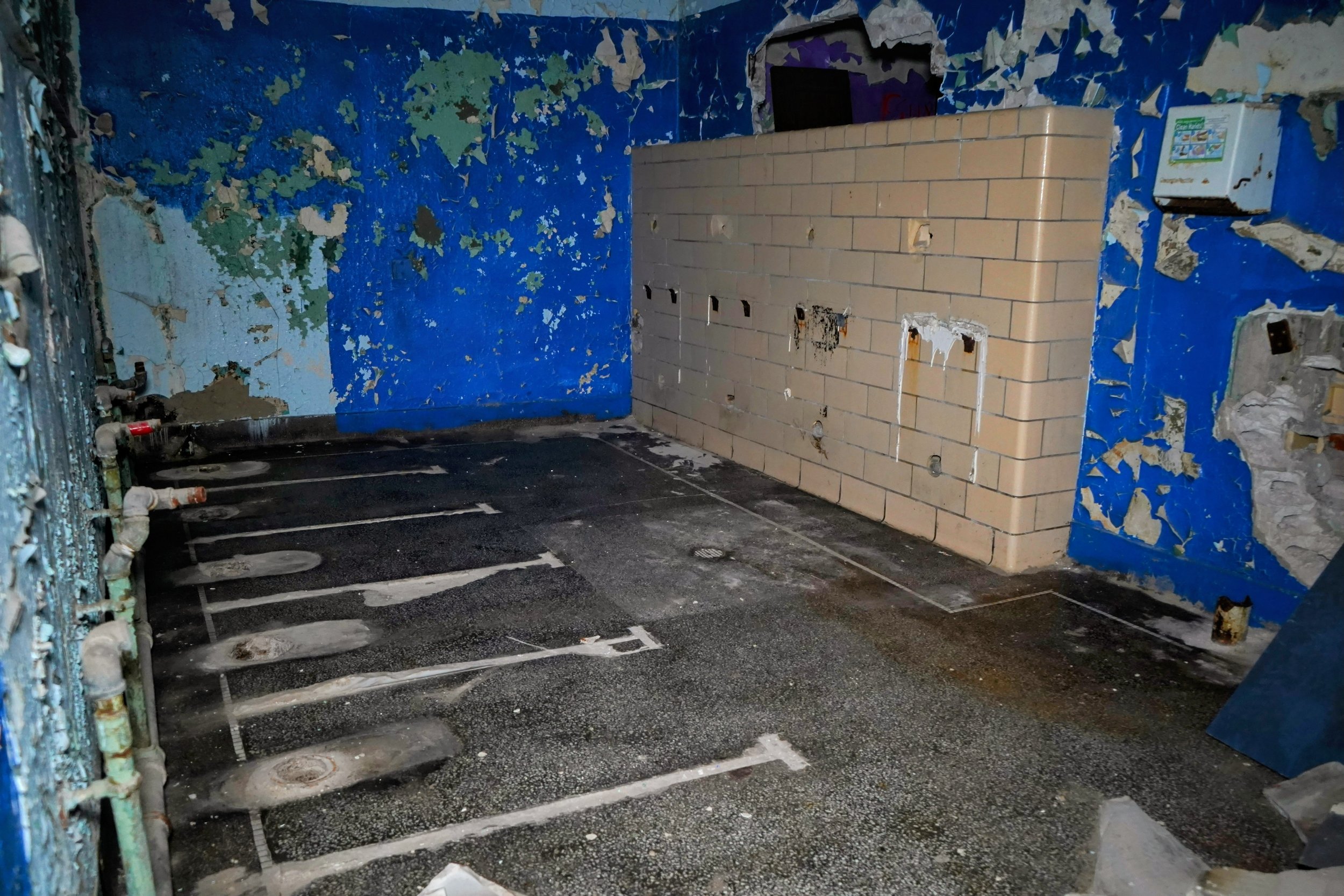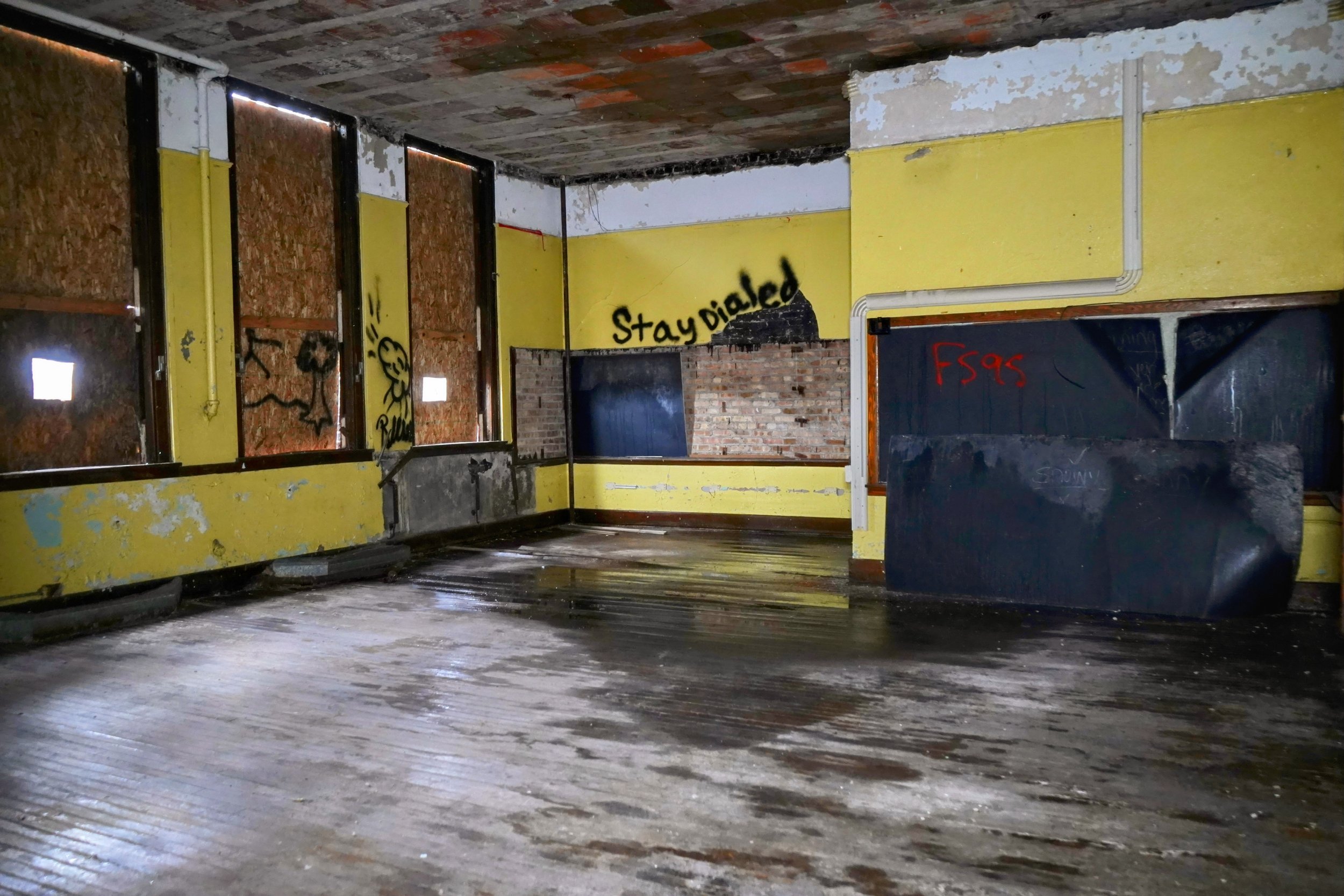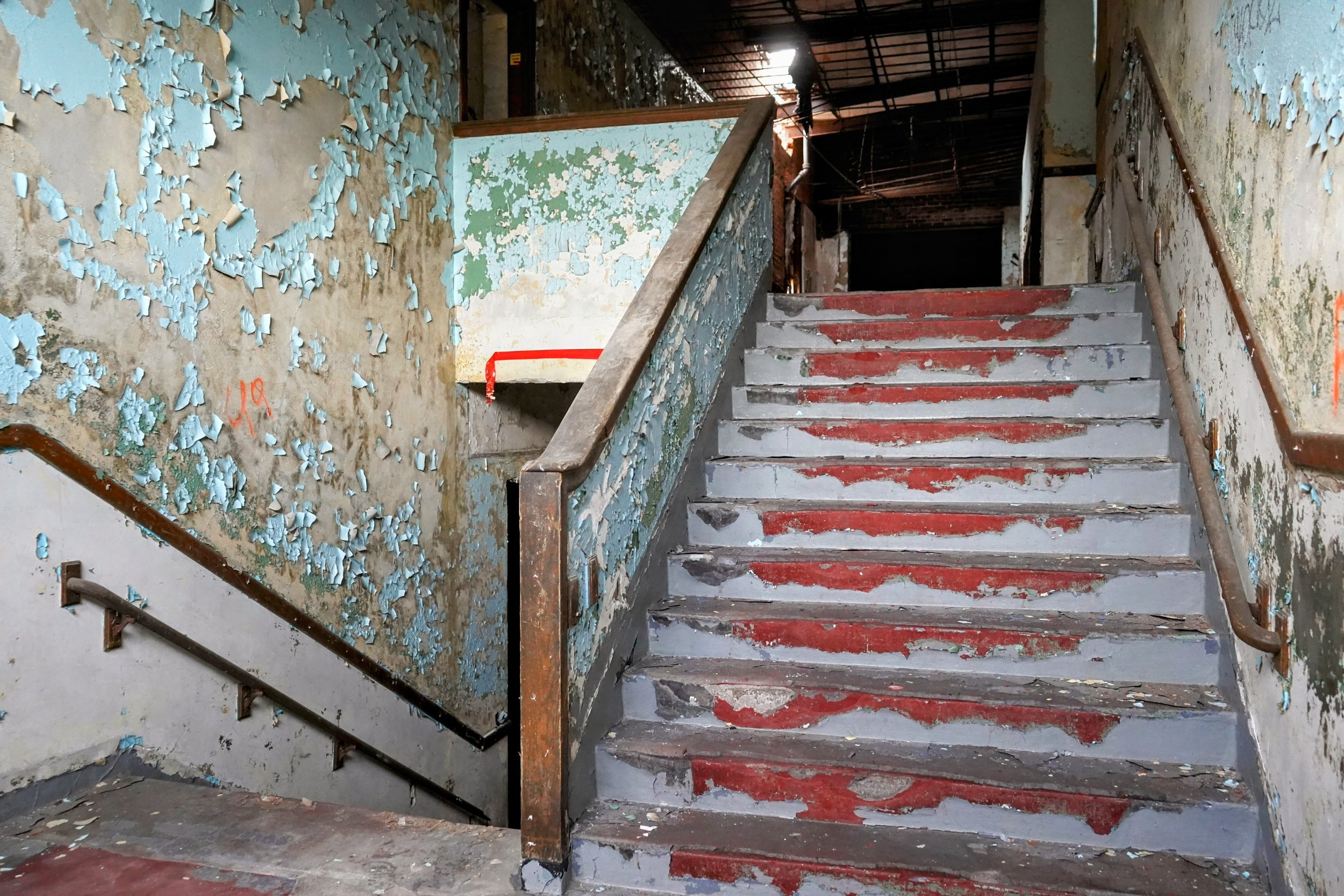
Carstens Elementary School
2550 Coplin St, Detroit, MI 48215
-Abandoned 2011
|Legacy Page|
Watch the Uncut Exploration
Date Recorded: 5/11/25
Out first only to abandonedcommercialdetroit.com viewers
Locate it!
History of Carstens Elementary School
Carstens was built in 1916 and was one of the earliest additions of schools in Detroit. The neighborhood around Carstens was old, mostly constructed in the early 1900s , as the now defunct car company, the Hudson Motor Car Company, was established in 1909 in the area. This neighborhood marked an early phase in the major expansion of Detroit. Carstens, built in 1916, followed the Arts and Crafts architectural style that gained massive popularity in the early 1900s before the emergence of Art Deco. Carstens underwent three major expansions the first of which was three years after the school was built in 1919, this expansion included a gymnasium and auditorium, along with some other minor additions. a second smaller addition was added in 1921 adding 9 homerooms to the school. After 1921 the full building as Carstens stood was competed in this addition making Carstens one of the earliest schools built during the rise of Detroit. Notably, this school received all of its major expansions before most Detroit Public Schools were established, as most were built throughout the 1920s and 1930s. During the 1940s, the neighborhood reached its peak, with every block filled with rows of houses. Carstens was a staple of the community throughout this time. The staff went above and beyond, making Carstens one of the highest performing schools in Detroit. Staff often provided extra meals for students to take home on weekends outside of school hours. Additionally, when several students developed lead poisoning and were hospitalized, the school created an outreach program to educate parents about the dangers of lead paint found in older homes in the neighborhood. In 1957, Carstens took over the Special Education plan of the nearby Herbert M. Rich School, which sat on the land around Carstens and was demolished at a unknown time but was defunct by the time Carstens had taken over the program. Around this same time, many basement classrooms were added to the school's floor plan. The decline of Carstens can also be traced back to this period, as in 1960, the Hudson Motor Car Company Plant was demolished after years of mergers and changes at the plant. This change, along with the aging housing stock in the neighborhood, the general decline of Detroit, and the 1967 Riots, all contributed to a steady decline in the Fox Creek neighborhood. By 2000 , 68% of the land was vacant in the neighborhood, and most of the remaining housing was rated as poor. By 2007, the school had lost half of its population in just nine years; from 1998 to 2007, the student population decreased from 776 to 339. The school was on the list for downsizing in Detroit in 2010, with a student population of only 199 by that time. The neighborhood fought to keep one of its last remaining anchors alive and succeeded. However, a year later, the school would be closed in 2011, citing $3 million in repairs needed for the building and declining enrollment. Until the end, the school maintained its successful program, which contributed to its longevity amid a sea of closures and downsizing in Detroit between 2007 and 2012. The school was sold to the land bank in 2015, and in 2025, it was unfortunately demolished during mid to late May. Marking the end to one of the older schools of Detroit and one of the most unique ones at that with the very unique Arts and Crafts Style of Architecture.
Additional Reading
-
Hattie M. Carstens, an activist who served a variety of social causes in the city until her death in 1915.

Recollection from the author
Carstens was once a school with lots of character that had a community fight to keep their neighborhood landmark open. Simliar to Courville Elementary School, Carstens told a unique story. Though the story was partially skewed due to our late arrival at documenting the school. At the point we had arrived the early stages of demolition had taken much of the uniqueness from the school most notably the auditorium. But not once in a school did a school’s auditorium tell the full story. Carstens was no different and had many unique murals intact to showcase the school’s character. Carstens from the outside didn’t look like much. The school was finished in 1916 and didn’t receive any upgrades past 1919, besides basement classrooms additions in the 1960s. This made Carstens unique as it didn’t follow in the footsteps of many schools after it design wise. Most Detroit public schools opened in the 1920s and 30s this school as mentioned recived it’s last additions in 1919. Making it one of the earliest Detroit Public Schools. The school was architecturally beautiful, and that front facade was the best of the best in my opinion when it came to Detroit Public Schools.
Carstens had one of the most beautiful facades of any Detroit Public School
Much of the foilage that had consumed the school since 2011 was removed before demolition work began
The School name was stamped around the school exterior
All windows of the school had been scrapped
At the point we had explored the school it was already a Demolition site and in the very early stages of Demolition
Carstens was surrounded by a land of open fields of nothingness, with very few houses even in surrounding blocks
Once a mural stood below the text introducing the students to Carstens at the main entrance of the school
This mural sat right above the entrance to the kindergarten room
Though the main mural was removed many others still remained
Mural shot 2
Mural shot 3
Mural shot 4
Mural shot 5 (A addition likely during Kenneth Burnley era of DPS, this is due to his strong belief in reviving DPS via this program and giving students resources to succeed and beat out the charter schools)
Kindergarten room shot 1
Kindergarten room shot 2
Carstens was full of empty hallways some that stretched as long as a football field in spots.
Much of the 2nd floor ceiling had been removed likely by the demolition crew
The Basement hosted various spaces from classrooms to utility rooms and even the gymnasium
The Gymnasium buried underground sat right below the auditorium
Due to the boarded windows this was the darkest room in the whole school
The auditorium due once have a curtain and facade but was removed by this point in the demolition
Auditorium from the balcony
Auditorium where seats once would have been placed
Some classrooms in the basement had stairs leading to windows
1st floor classroom
Another 1st floor classroom
Some classrooms became a storage space for the demolition crew
Covering had been put over holes in the floor
Pile of debris in another classroom
Board inside one of the classrooms with debris visble
debris in the hallway
Bathroom stripped of everything
Courtyard as seen from the 1st floor
Courtyard as seen from the 2nd floor
Basement stairs
1st floor side staircase
Hallway nearby to Main Mural
Main Staircase in the middle of the building
Hallway next to one of the murals (Note the Crumbled floor)
2nd Floor Hallway
2nd Floor hallway shot 2
2nd Floor hallway shot 3 (note more very decayed flooring)
All Lockers had been scrapped out throughout the whole school
Classroom in one of the corners of the school
Staircase leading to basement
Ceiling in one of the 2nd floor classrooms
A Door that reads out many one lined words of various meaning
Classroom on 2nd Floor
2nd Floor main staircase
A Phase 10 Card game was once played by explorers of the school
In certain sections of the school very unique flooring was present
Side staircase
Basement corridor
Boiler Room
Left side of Boiler Room
Classroom with intact cabinets
1st floor hallway as seen from a staircase
Side entrance to the school
Staff lounge
Black mold in staff lounge
Basement stairs leading to main staircase
Band Room Entrance
Another basement classroom
Open Closed sign in basement
information board next to one of the staircases in the basement
Information board in basement
Another Basement Classroom
Basement Corridor main hallway
A board in the corner has been removed










































































